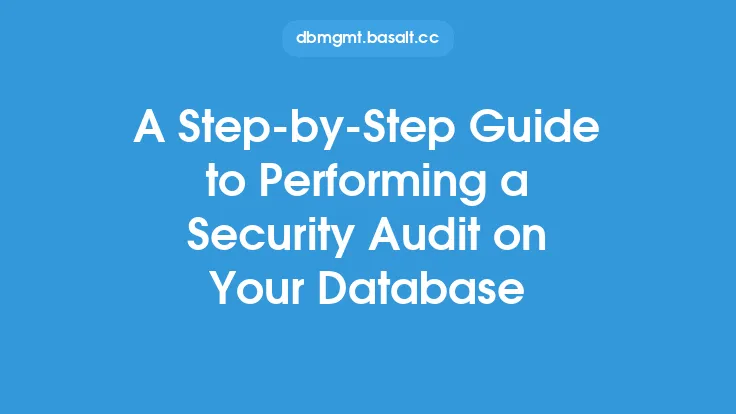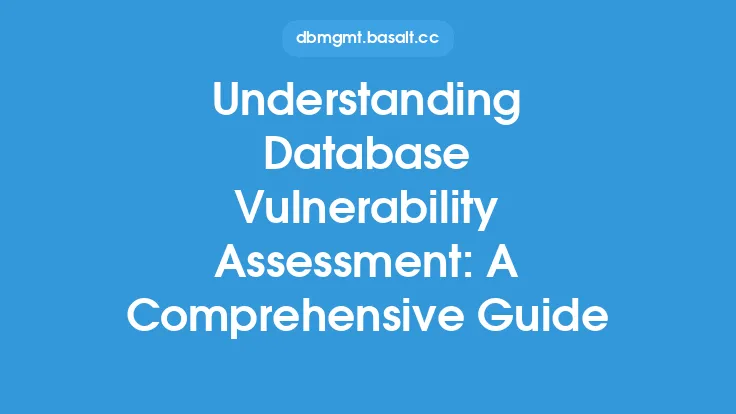Database version control systems are an essential component of database administration, as they enable teams to manage changes to the database schema, track modifications, and collaborate on database development. In this article, we will delve into the world of database version control systems, exploring their benefits, key features, and best practices for implementation.
Introduction to Database Version Control
Database version control systems are designed to manage changes to the database schema, which includes the structure and organization of the data. These systems provide a centralized repository for storing and managing database schema changes, allowing teams to track modifications, collaborate on development, and maintain a consistent and stable database environment. Database version control systems are similar to traditional version control systems, such as Git, but are specifically designed to handle the unique challenges of database development.
Benefits of Database Version Control
The benefits of database version control systems are numerous. Firstly, they provide a clear audit trail of all changes made to the database schema, allowing teams to track who made changes, when, and why. This is particularly important in regulated industries, where auditing and compliance are critical. Secondly, database version control systems enable teams to collaborate on database development, reducing the risk of conflicts and errors. Finally, these systems provide a mechanism for rolling back changes in case of errors or issues, ensuring that the database remains stable and consistent.
Key Features of Database Version Control Systems
Database version control systems typically include a range of key features, including:
- Schema management: The ability to manage and track changes to the database schema, including tables, indexes, views, and stored procedures.
- Versioning: The ability to create and manage multiple versions of the database schema, allowing teams to track changes and collaborate on development.
- Branching and merging: The ability to create branches of the database schema, allowing teams to work on different versions of the database simultaneously, and then merge changes back into the main branch.
- Change tracking: The ability to track changes made to the database schema, including who made the change, when, and why.
- Rollback and recovery: The ability to roll back changes in case of errors or issues, ensuring that the database remains stable and consistent.
Types of Database Version Control Systems
There are several types of database version control systems available, including:
- Native database version control: Some databases, such as Oracle and SQL Server, include native version control systems that provide basic versioning and change tracking capabilities.
- Third-party database version control: Third-party tools, such as Redgate and Apex, provide more advanced version control capabilities, including branching, merging, and rollback.
- Open-source database version control: Open-source tools, such as Liquibase and Flyway, provide free and customizable version control capabilities.
Best Practices for Implementing Database Version Control
Implementing database version control requires careful planning and execution. Here are some best practices to consider:
- Start small: Begin with a small pilot project to test and refine your database version control process.
- Choose the right tool: Select a database version control system that meets your team's needs and is compatible with your database management system.
- Establish a change management process: Develop a clear change management process that outlines how changes will be made, reviewed, and approved.
- Train your team: Provide training and support to ensure that your team understands how to use the database version control system effectively.
- Monitor and audit: Regularly monitor and audit your database version control system to ensure that it is working effectively and that changes are being tracked and managed properly.
Technical Considerations
When implementing database version control, there are several technical considerations to keep in mind. These include:
- Database compatibility: Ensure that your database version control system is compatible with your database management system.
- Schema drift: Be aware of schema drift, which occurs when the database schema changes over time, and develop strategies to manage and track these changes.
- Performance impact: Consider the performance impact of database version control on your database environment, and optimize your system to minimize any negative effects.
- Security and access control: Ensure that your database version control system includes robust security and access control features to prevent unauthorized changes to the database schema.
Conclusion
Database version control systems are a critical component of database administration, providing a centralized repository for managing changes to the database schema, tracking modifications, and collaborating on database development. By understanding the benefits, key features, and best practices for implementing database version control, teams can ensure that their database environment remains stable, consistent, and secure. Whether you are working with a small team or a large enterprise, database version control is an essential tool for managing the complexity and risk associated with database development.





